Azalea vs Rhododendron – The Difference Between Them Explained By Horticulturists

SHRUBS > AZALEAS > VS-RHODODENDRONS
Reviewed By COLIN SKELLY

Colin is a Horticulturist and Horticultural Consultant with experience in a range of practical and managerial roles across heritage, commercial and public horticulture. He holds the Royal Horticultural Society’s Master of Horticulture award and has a particular interest in horticultural ecology and naturalistic planting for habitat and climate resilience.
Contributions From KATRINA CLOW

Katrina Clow is the Hon. Secretary of The Scottish Rhododendron Society. Katrina has over 60 years of gardening experience and has a particular passion for growing rhododendrons in her woodland garden in West Scotland.
IN THIS GUIDE
AZALEA GUIDES
Azalea vs Rhododendron
Azalea Japonica
Common Problems
– Brown Leaves
Container Growing
Deadheading
Feeding
Repotting
Transplanting
Varieties
Winter Care
Though Azaleas and Rhododendrons are distinct plants, they are very closely related and hybrids between the two have arisen or been developed.
Each of Azalea and Rhododendron used to be a genus of its own under Carl Linnaeus’s classifications.1Azaleas and Rhododendrons. (n.d.). University of Arkansas. Retrieved March 10, 2023, from https://www.uaex.uada.edu/yard-garden/resource-library/plant-week/Azaleas-Rhododendrons-05-01-2020.aspx
However, professional Botanists and Taxonomists got up to their usual mischief, re-classifying and re-arranging the genera and their species and confusing us poor lay gardeners!
“It can be hard to keep up with botanical name changes, although, as with Azaleas and Rhododendrons, the previous names often still stick for gardeners and nurseryman,” says Colin Skelly, a Master Horticulturist with 15 years of experience.
“I don’t get frustrated though because the point of botanical classification is to group plants together that are related in origin.
“This was previously done using only the features of the plant, such as leaves and flowers.
“Botanists are now able to use DNA, which has revealed some surprises – plants that look alike but aren’t related and vice versa.”
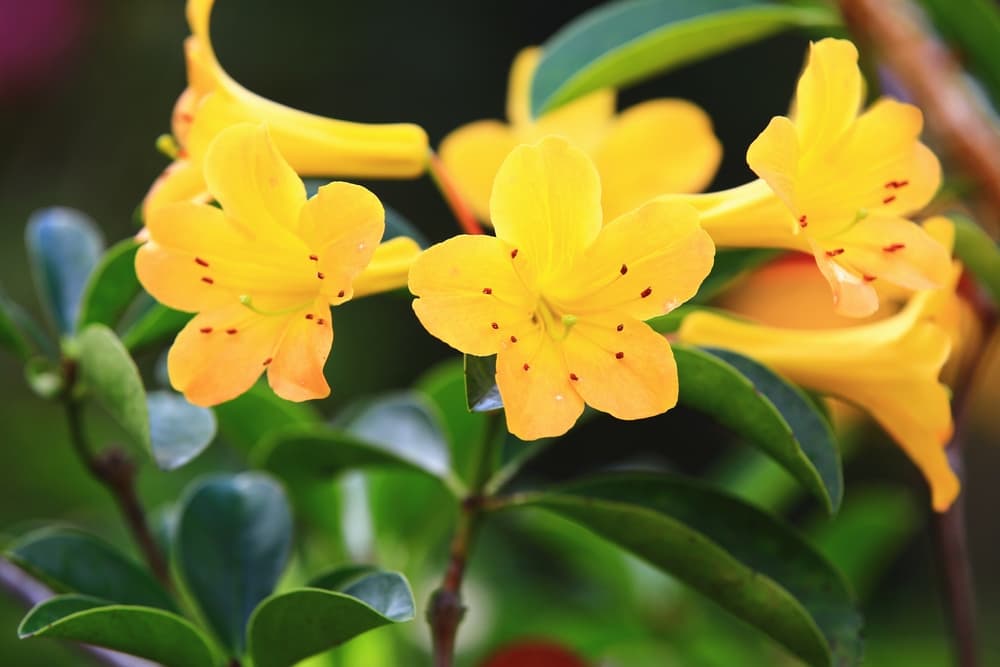
But then, growers and gardeners themselves were also partly to blame because all too often they would not, and still do not, distinguish between the two plants and, instead, use the names ‘Azalea’ and ‘Rhododendron’ interchangeably, though horticulturalists were and are usually more disciplined.
A long struggle to subsume Genus Azalea within those Rhododendrons was waged from 1834 to the early 1900s, when the resistance ended.2Rhododendron and Azalea Classification Information. (n.d.-b). The American Rhododendron Society. Retrieved March 10, 2023, from https://www.rhododendron.org/classification.htm
A scattered insurrection continues.
“Azaleas and rhododendrons belong to the same vast genus of rhododendron,” explains Katrina Clow from The Scottish Rhododendron Society.
“There are two subgenera of azaleas; one group is deciduous and the other are small-leaved evergreens.”
So as it stands, Azaleas are subsumed within Genus Rhododendron, a member of Family Ericaceae or the Heather Family.3About Rhododendrons. (n.d.). Rhododendron Species Botanical Garden. Retrieved March 10, 2023, from https://rhodygarden.org/our-plants/rhododendrons/about-rhododendrons/
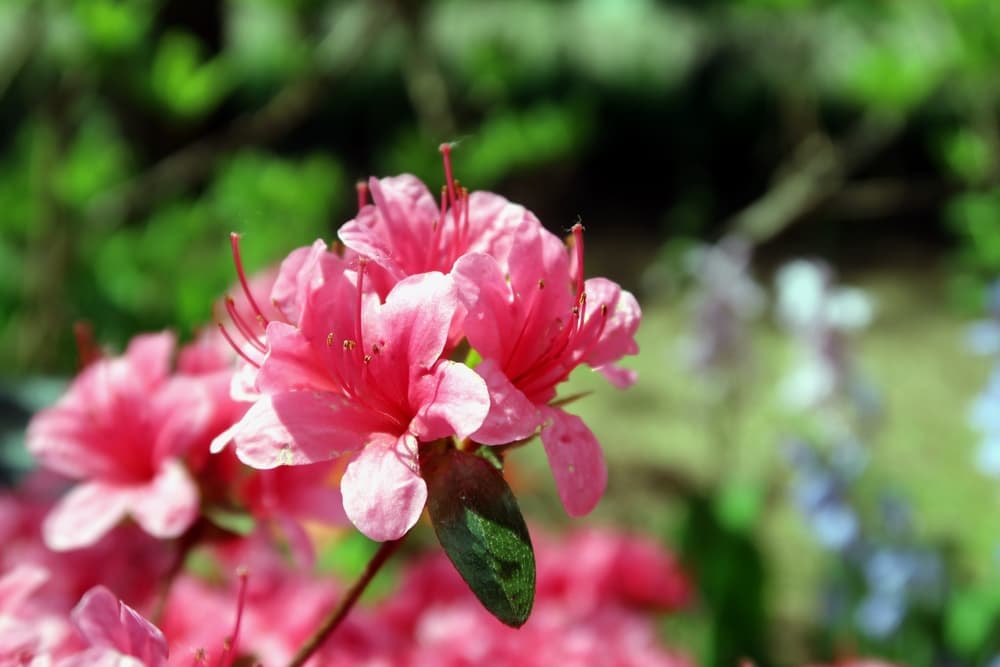
These plants are well-known to be acidophilic.
Azaleas are classified under two sub-genera, Pentanthera and Tsutsusi.4Rhododendron and Azalea Classification Information. (n.d.-c). The American Rhododendron Society. Retrieved March 10, 2023, from https://www.rhododendron.org/classification.htm
The former sub-genus comprises about 15 species that are deciduous; these are native to the southern USA; the latter sub-genus includes about 80-120 species that are evergreen, and these are native to a swath of East Asia.5The Editors of Encyclopaedia Britannica. (2023a, January 25). Azalea. Encyclopedia Britannica. Retrieved March 10, 2023, from https://www.britannica.com/plant/azalea
“The deciduous azaleas are a lovely group, stunning in bloom with a wide colour range, fragrant and with good autumn colour and easy to manage,” Katrina shares.
“They are later to flower so may escape May frosts, and they are easy to propagate, from woody cuttings or offshoots at the base too.
“Evergreen azaleas make good houseplants and tolerate indoor conditions better than other rhododendrons.”

As for the hybrids and cultivars, there are untold thousands of them; as a result, many evergreen Azaleas are grown in the United States.
Differentiating Factors
Rather than lay out lengthy descriptions as to how to tell apart Azaleas and Rhododendrons, we provide a handy chart for quick lookup and differentiation.
Factors are listed in descending order of decisive importance.
We do not include blooming season as a factor because this varies and overlaps so much by variety, climate, and geographic location.
| Azalea | Rhododendron | |
| Number of Stamens | Usually 5 but up to 10 | 10 or more |
| Flowers | Usually Solitary/Terminal | Almost Always in Trusses |
| Leaves – Texture | Soft and Smooth | Leathery or Scaly Underneath |
| Leaves – Size | Smaller and Thinner | Bigger and Thicker |
| Flower Shape | Tube-Funnel-Shaped | Bell-Like |
There are other points of difference but those are more subjective and are also liable to overlap and to exceptions.
Here are some visual comparisons of each:
1) Stamens
An Azalea will usually have five-to-ten stamens; Rhododendrons will typically have ten or more.
Azalea
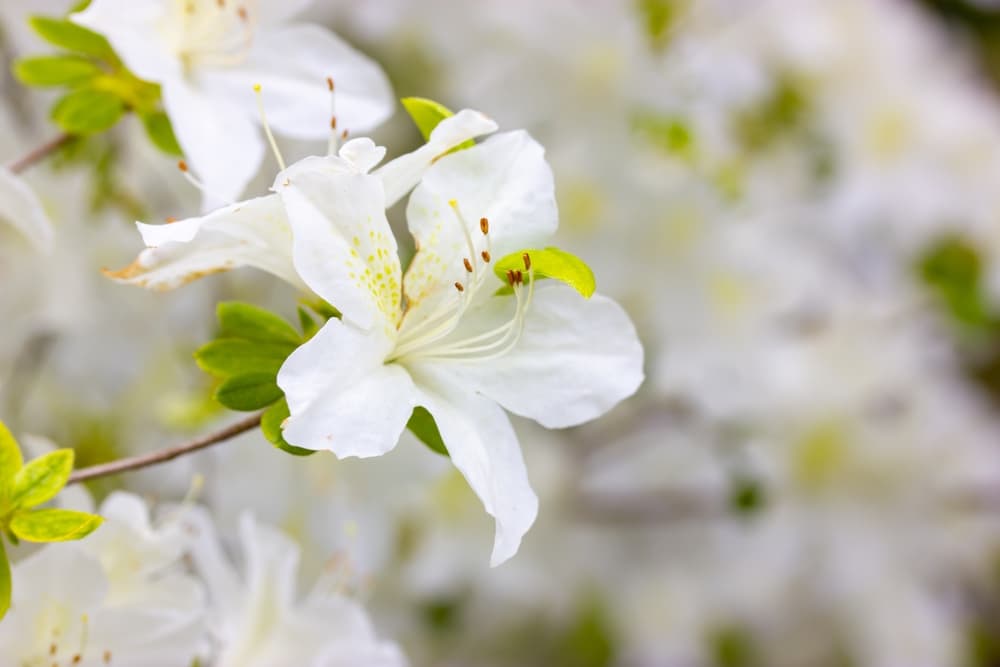
Rhododendron

2) Flowers (Number & Shape)
Flowers of an Azalea are usually solitary; Rhododendrons will form in trusses like the flowers of a tomato plant.
In terms of flower shape, Azalea flowers are tube- or funnel-shaped; Rhododendrons look more like the shape of a bell (though this isn’t the most prominent tell-tale sign).
Azalea
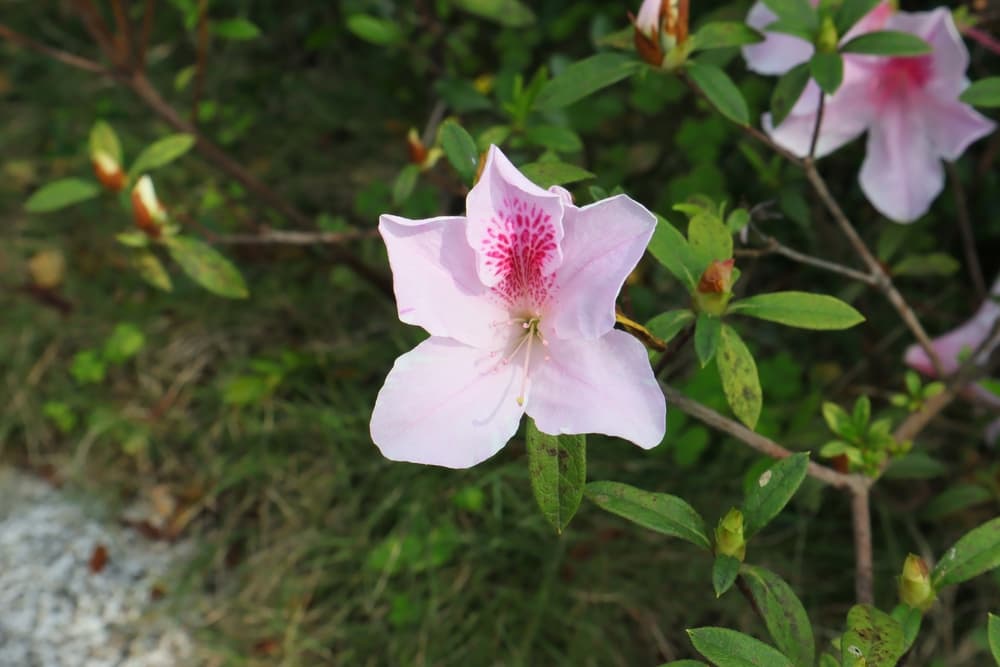
Rhododendron
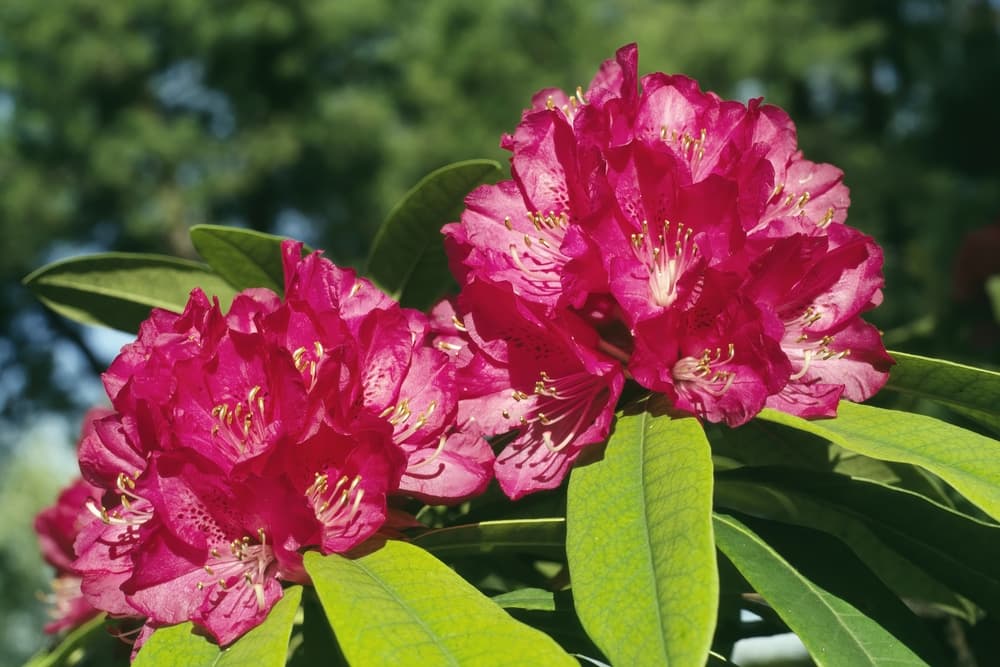
3) Leaves (Texture & Size)
The leaves of an Azalea are typically smaller and thinner than those of a Rhododendron plant.
You may also find that Azalea leaves feel soft and smooth to the touch; while Rhododendrons are often leathery or scaly on the underside.
Azalea
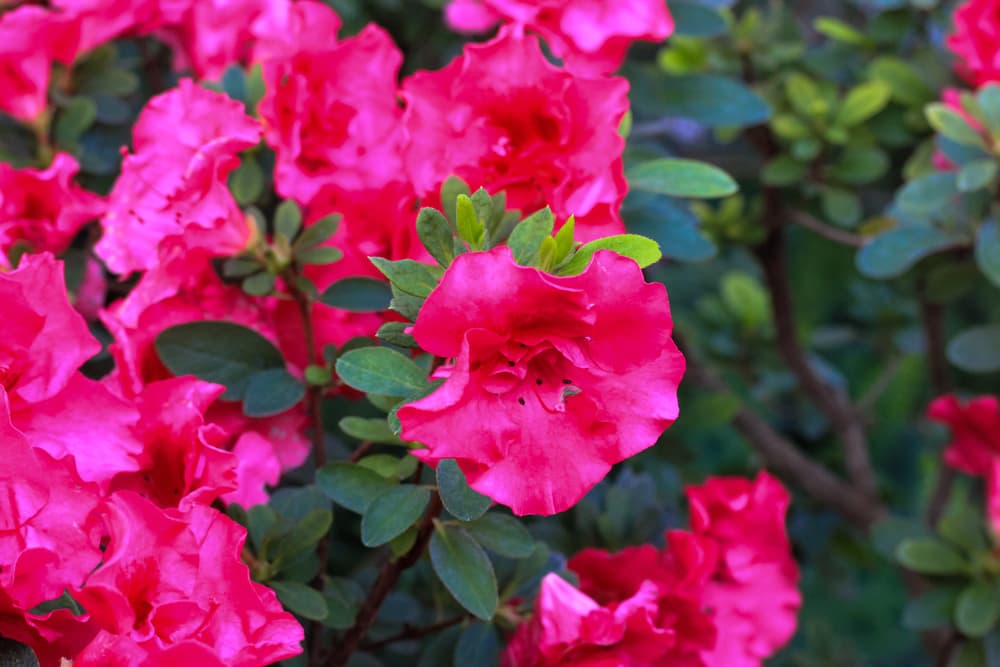
Rhododendron
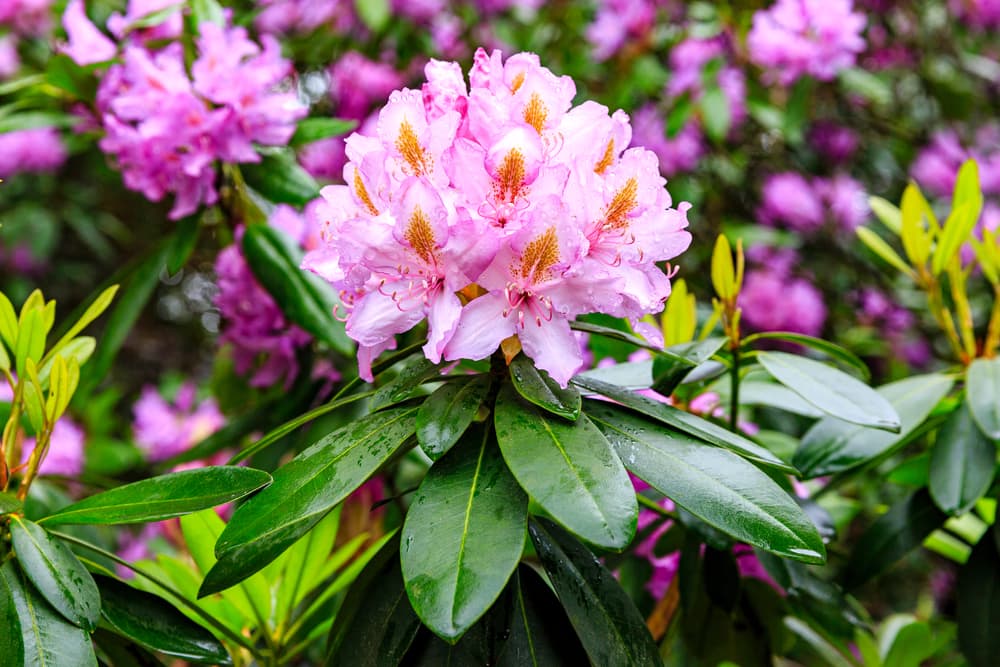
References
- 1Azaleas and Rhododendrons. (n.d.). University of Arkansas. Retrieved March 10, 2023, from https://www.uaex.uada.edu/yard-garden/resource-library/plant-week/Azaleas-Rhododendrons-05-01-2020.aspx
- 2Rhododendron and Azalea Classification Information. (n.d.-b). The American Rhododendron Society. Retrieved March 10, 2023, from https://www.rhododendron.org/classification.htm
- 3About Rhododendrons. (n.d.). Rhododendron Species Botanical Garden. Retrieved March 10, 2023, from https://rhodygarden.org/our-plants/rhododendrons/about-rhododendrons/
- 4Rhododendron and Azalea Classification Information. (n.d.-c). The American Rhododendron Society. Retrieved March 10, 2023, from https://www.rhododendron.org/classification.htm
- 5The Editors of Encyclopaedia Britannica. (2023a, January 25). Azalea. Encyclopedia Britannica. Retrieved March 10, 2023, from https://www.britannica.com/plant/azalea

